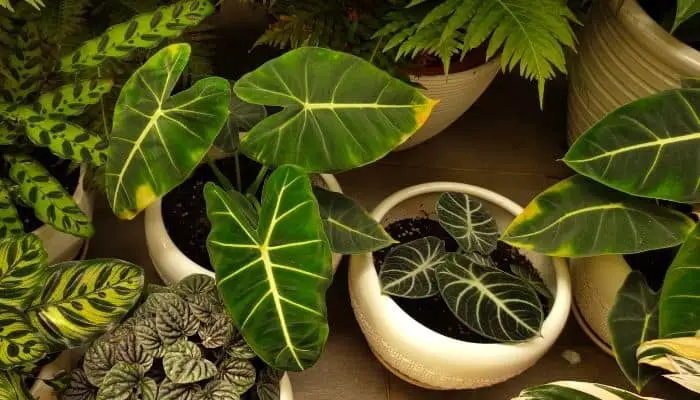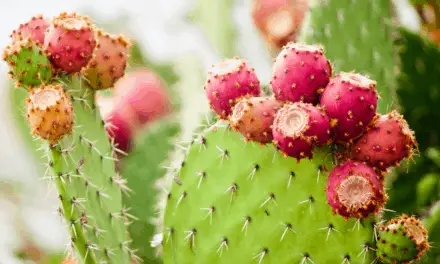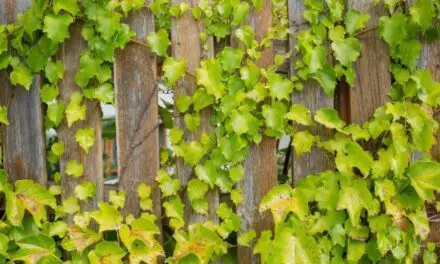Philodendrons are tolerant to lower light conditions and make brilliant indoor plants.
But just because they can survive in low-light environments doesn’t mean they’ll be happy or grow the way you expect them to.
In this article, we’re going to look at the reasons philodendron leaves grow small and how you can encourage your plant to grow big and beautiful ones.
Table of Contents
Why Are My Philodendron Leaves Getting Smaller?

Your philodendron leaves are getting smaller because your plant is not receiving enough light, warmth, and humidity.
If you are growing this plant in a dimly lit living room or a bathroom with a tiny window, its leaves will grow small and it will spread out more and more.
Philodendrons usually grow the most in locations that get plenty of bright, indirect light.
They don’t like strong, direct sunlight as it can scorch their leaves.
However, too much shade will cause elongated stems, smaller leaves, and greater space between the leaves, making your philodendron look thin and leggy.
These plants will grow much more If you provide them a temperature of 60 to 80 F and humidity levels of 60% and higher.
A philodendron will continue to grow in lowlight conditions for many years and some people choose to wrap the stems around the pot to make it look lush and fuller.
But this is not a solution that will make your plant very happy.
Related Article: How To Grow Your Aloe Vera Leaves Thicker? (Easy Ways That Work)
How Do You Make Philodendron Leaves Bigger?
You can make your philodendron leaves bigger by providing it more bright, indirect sunlight, the right amount of water, warmth, humidity, fertilizer, and repotting when the plant becomes root-bound.
Give More Bright, Indirect Sunlight
The best way to get your philodendron to grow larger leaves is to give it brighter indirect light.
Try to find a spot near a window that gets lots of bright indirect light but no direct sunlight.
You can keep them a few feet back from a southern-facing window or if you’re placing it at a west-facing window you can set up a sheer curtain to filter the full sun.
If you see the color in your philodendron begin to fade or turn yellow – it’s probably getting too much light and you may want to pull it back from the window a little.
Water Properly
If you want your philodendron plant to grow larger leaves, it’s really important that you don’t over or underwater it.
There are many factors, such as temperature, time of year, and humidity, that will determine how often you will have to water your plants.
The safest way to know if your plant needs water is to test the top two or three inches of soil with your finger and only water when it feels dry.
If the soil feels moist, hold off for a couple of days until it dries out more.
If you’re still not too sure, you can use a moisture meter.
Just stick the meter into the soil where the rootball is and when it reads dry you can give some water.
Once the soil is dry, pour in enough water from the top to completely saturate the rootball but do not flood the plant too much or you may end up with yellowing leaves.
And make sure your pot has good drainage and that the water is draining away out the bottom.
Wipe Dust From The Leaves
If your philodendron’s leaves become too dusty, it stops the plant from being able to photosynthesize effectively and this can cause smaller leaf growth.
Take a damp microfiber cloth and wipe down your plant’s leaves about once per month to help it produce food and energy more effectively.
Give Fertilizer
Philodendrons are not particularly heavy feeders, but their leaves may grow bigger and more vibrant as a result of a little fertilizing, especially during the growing season.
Feed your philodendron with a balanced liquid houseplant fertilizer.
Something like Miracle-Gro Plant Food (Liquid) would work well.
Water with the fertilizer every four weeks in spring and summer and again every six to eight weeks during the fall and winter.
Only use about half the recommended dose of fertilizer, in the beginning, to see how your plant reacts to it.
Sometimes if you over-fertilize it can cause a growth spurt of lots of small leaves instead of large heart-shaped ones.
Raise Temperature And Humidity
Philodendrons are not too picky about temperature and humidity but their leaves will grow bigger if you provide them a humid environment and a temperature of between 60 to 80 degrees F.
If the temperature is consistently dropping below 55 degrees F, your philodendron will grow more slowly and may start producing smaller leaves.
Philodendrons can manage in about 40% humidity but they will thrive and grow larger leaves in 60% and above.
Repot Your Philodendron When Root-Bound
When your philodendron becomes too pot-bound it may produce stunted growth and smaller new leaves.
When roots take over the pot and begin to grow in circles, it slowly suffocates the plant.
Lift your plant out of its pot and if there are tangled masses of roots growing everywhere, it is time to repot your philodendron into a pot that is one or two inches bigger.
Use loose, well-draining soil that’s rich in organic material.
How To Make Your Philodendron Fuller?
To make your philodendron fuller, remove stems at the edge of the pot and leave just one or two nodes at the base.
Then, replant the cut stems back into the same pot.
Providing your philodendron is getting lots of warmth, humidity, and bright, indirect sunlight, the new growth should begin to fill in fast from the cut stems.
The growth of the new stems will also provide more fullness once they root and start to grow.
Final Thoughts
Philodendron plants are fairly easy to care for and if you want to keep those heart-shaped leaves big and beautiful, provide it a warmth, humidity, a little fertilizing, and loads of bright, indirect sunlight.




